How To Add Pictures To Adobe Premiere Pro
VFX plates. Dramatic pans and scans over archival content. Even so images can be used in a myriad of means in your video project.
Thankfully, Adobe Premiere Pro keeps the door wide open for aspiring filmmakers looking to incorporate photos, graphics, and more into multimedia projects large and minor.
What Types of Images Can You Import Into Premiere Pro?

While the ceiling is high, Premiere Pro does impose some limitations on which even so images the program will have. The image can be no wider or taller than 32,768 pixels, allowing for a frame size of up to 256 megapixels in total.
Naturally, you will desire to choose images that are at least as large every bit the frame of the video that you will exist adding them to. While a smaller image size may reduce the time that it takes for Premiere to return your sequence, having pixels to spare may be platonic for yous, depending on the project. Account for a withal image twice as large as your projection's aspect ratio if you plan on punching in at any indicate in time.
The content of your notwithstanding prototype may also pose some technical challenges to Premiere. Moiré patterns may appear when minute, tightly-clustered lines in the photo are continuously reinterpreted by Premiere equally you lot scale out or zoom in.
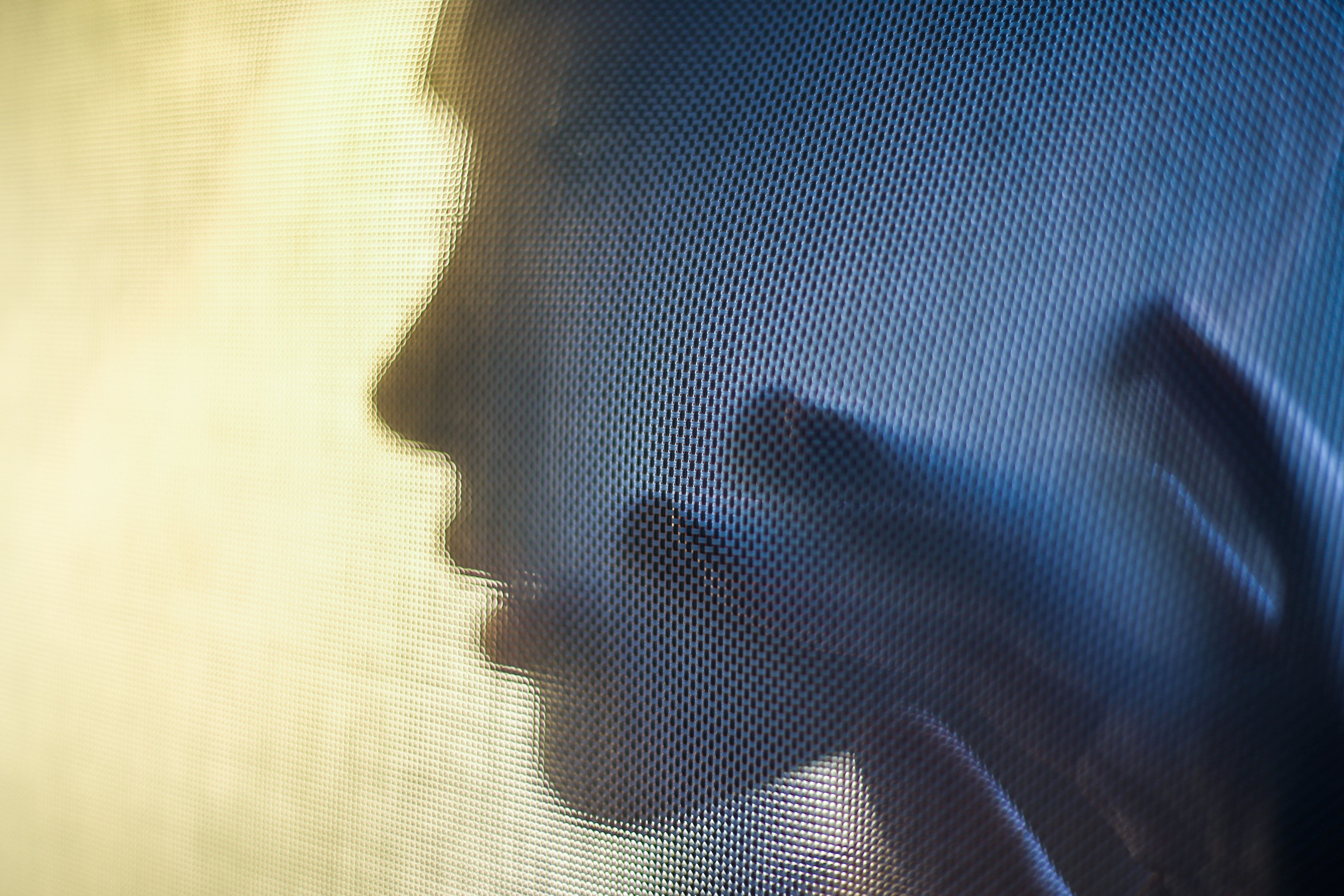
Lines and stripes may confuse the program equally information technology tries to parse their boundaries between discrete and contrasted values, resulting in unsightly artifacts. It'south all-time to avert things like tightly-knit or banded designs when working with media of contrasting resolution, particularly if you intend to scale it up or down on-screen.
As far as acceptable file types become, you tin can utilise JPEGs, PNGs, GIFs, TIFFs, and DPXs. Premiere is as well able to link projects to Photoshop and Illustrator files dynamically, giving yous the ways to continuously adapt your image without disturbing it from its place in your Premiere timeline.
Importing Your Prototype: Best Practices
One time you've confirmed that your image of choice is in accordance with the aforementioned, there are a few best practices in Premiere Pro to be mindful of when importing nonetheless images.
Before pulling anything in, hop on over to your Preferences carte du jour from the Edit dropdown. Navigate to your Timeline settings.
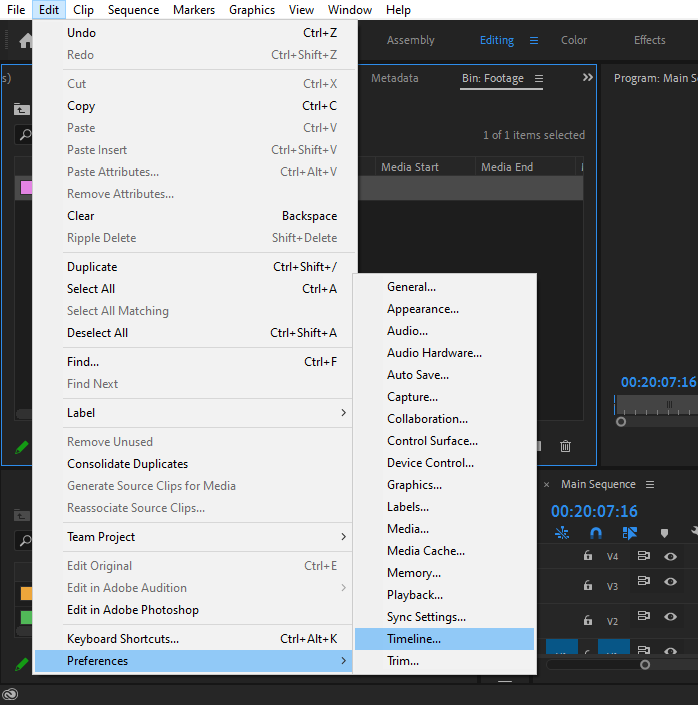
Here, you will be able to specify the length of every still that y'all import into the program by adjusting the Nevertheless Prototype Default Elapsing setting. Doing this preemptively will save yous a lot of headaches downward the line, specially if you intend to eventually import an epitome sequence.
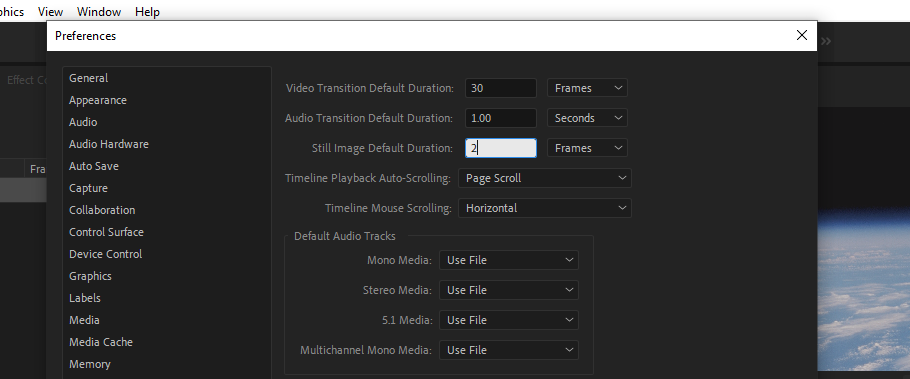
If alpha transparency in Premiere Pro is what yous're after, y'all can assign channel properties in Photoshop or Illustrator that volition exist fastened to the epitome file brought into Premiere.
Go along in mind that JPEGs are not capable of conveying alpha transparency with them, no thing where the images are coming from. Y'all should too brand certain that any stills that you plan on using are video-friendly in terms of colour space, two common options existence sRBG and NTSC RGB.
Also noteworthy: if your prototype is saved as either a PSD or an AI file, all of your separate layers will be preserved and can continuously be modified as you work—you lot will be asked whether or not you would like to merge them when you bring them into Premiere Pro.
Containing your workflow to only the Adobe suite might be your best bet if you're using these images to breathing a complicated sequence, or if your project features many graphic elements that you programme on tweaking many times.
Now will also exist your moment to exercise your due diligence in terms of naming conventions and folder hierarchy, even if only for the sake of completeness and professionalism. Getting used to working in this way will make editing larger projects after on much easier.
How to Import Still Images Into Premiere Pro
Ready to begin? Fire upward Premiere—information technology'due south showtime.
From ane of your bins, either right-click and select Import from the context menu, or striking Ctrl + I to recall the Import window. Select your withal image of choice and click Open.
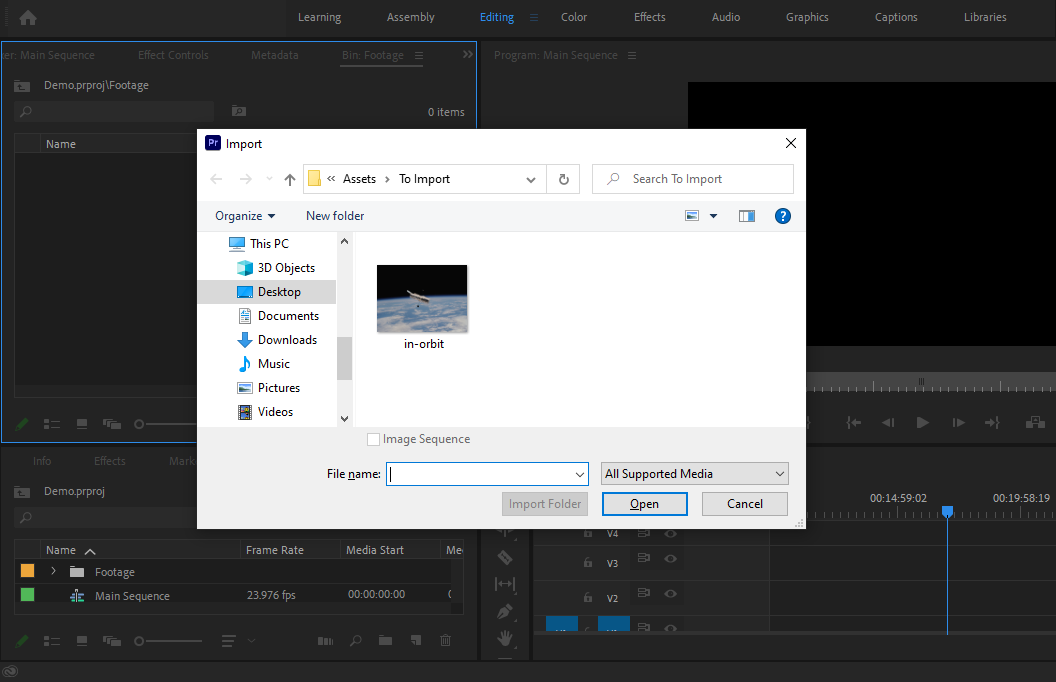
From the bin, you'll exist able to pull information technology correct into your timeline. You can use the Event Controls console to adjust the position, scale, rotation, and opacity of the image. You lot volition also be able to apply other furnishings to the epitome, much like you would whatever other asset.
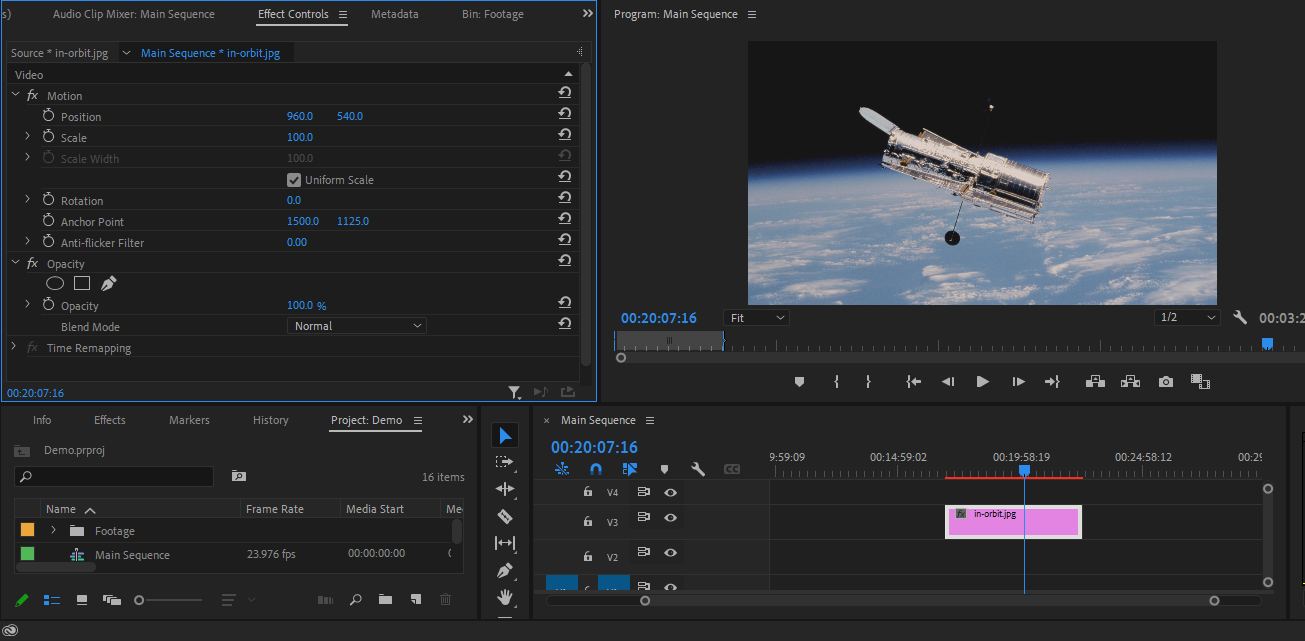
And that's it. How easy was that?
When to Use Still Images in Your Projection
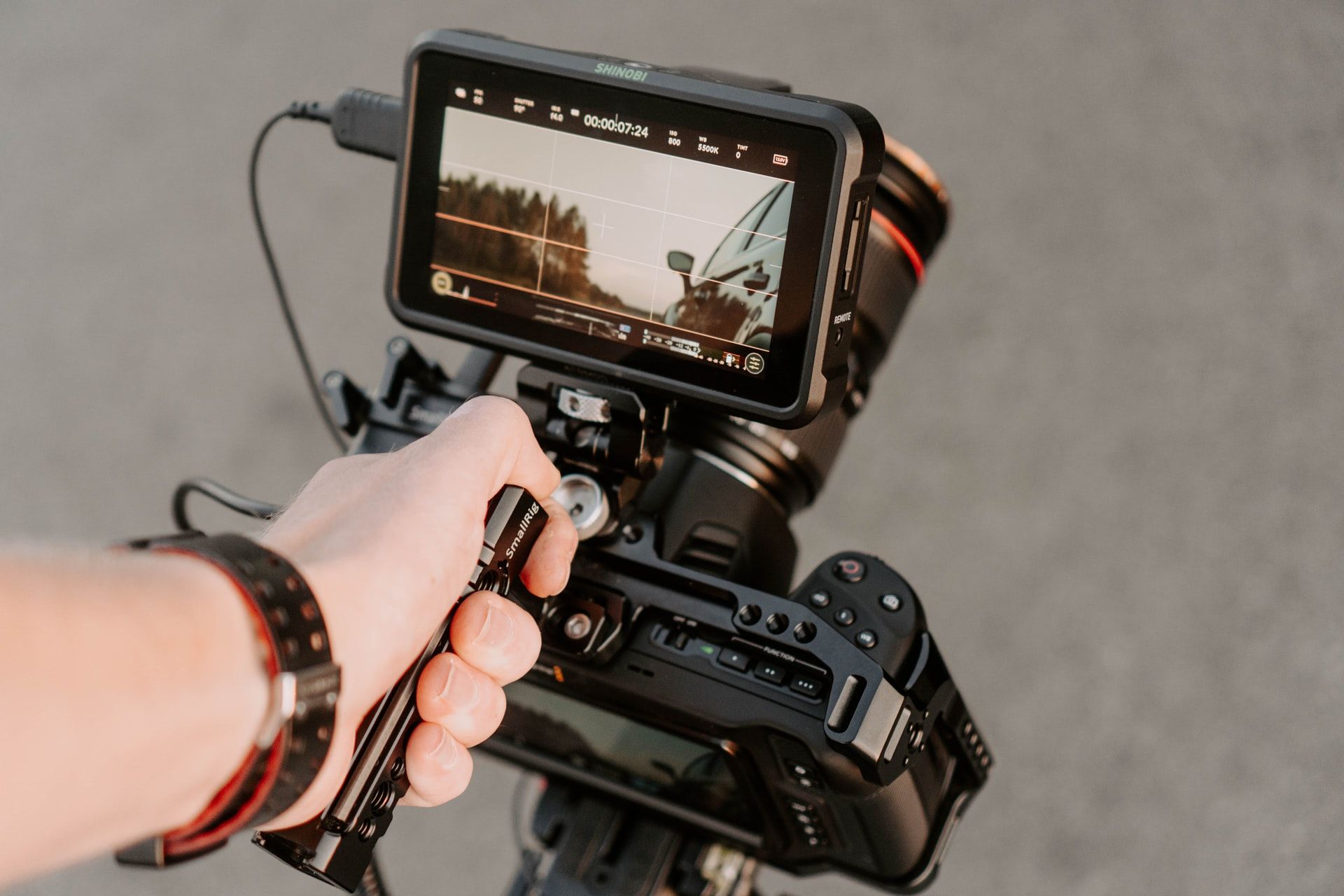
Getting the images ready is the annoying part. At present, all that's left is to decide what you lot're going to do with them.
We've got more than than a few jumping-off points for you to explore.
ane. When Coin Is Tight
Most of us outset out filmmaking at home on our own. Sky replacement is one common crowd-pleaser—you're able to transform your humble accommodations into a remote, exotic destination (spacesuit and helmet sold separately). In that location are many ways that yous can upgrade even the most modest project with still images in this manner.
2. When Yous Need the Resolution
Still images make first-class avails when working with composited VFX; they're clean, crisp, and will generally pack a wallop in terms of resolution.
Call back about a video shot in 1080p and some other shot in 4K; the latter allows you to calibration the image up, cropping you in without hitting a wall. A still image of greater proportion volition only afford you and then much more than flexibility in post-production.
three. When You're Animating a Sequence
Animation comes in all sorts of flavors. Harness the persistence of vision and bring the inanimate objects effectually you to life. Paradigm sequences in Premiere Pro allow you to do then with ease.
four. When You Want to Reinforce an Idea
Our man Ken Burns is the one who started it all. His piece of work in documentary filmmaking is what fabricated panning and scanning archival photos à la the History Aqueduct one of the near infamous tropes to ever grace our television screens.
When you're short on material and need to get your point across, this technique works well to bridge any semantic gaps that you may have in your narrative.
five. When You've Got a Lot to Keep Track Of
Reference for color? Done. Documentation for continuity? Why wouldn't y'all want that in your back pocket after your shoot? Save yourself the hassle of pulling out your pencil and notepad; snap a shot to pull into your system when all is said and washed.
The Possibilities at Paw Should Terrify and Excite You
With a bit of lateral thinking, your creativity will know no bounds. There are literally countless possibilities when it comes to incorporating images into your projects, which may seem overwhelming at first. All information technology takes is a bit of experimenting to figure out the best way to include a however image in your project.
How To Add Pictures To Adobe Premiere Pro,
Source: https://www.makeuseof.com/how-to-import-still-image-premiere-pro/
Posted by: isaacslact1943.blogspot.com


0 Response to "How To Add Pictures To Adobe Premiere Pro"
Post a Comment